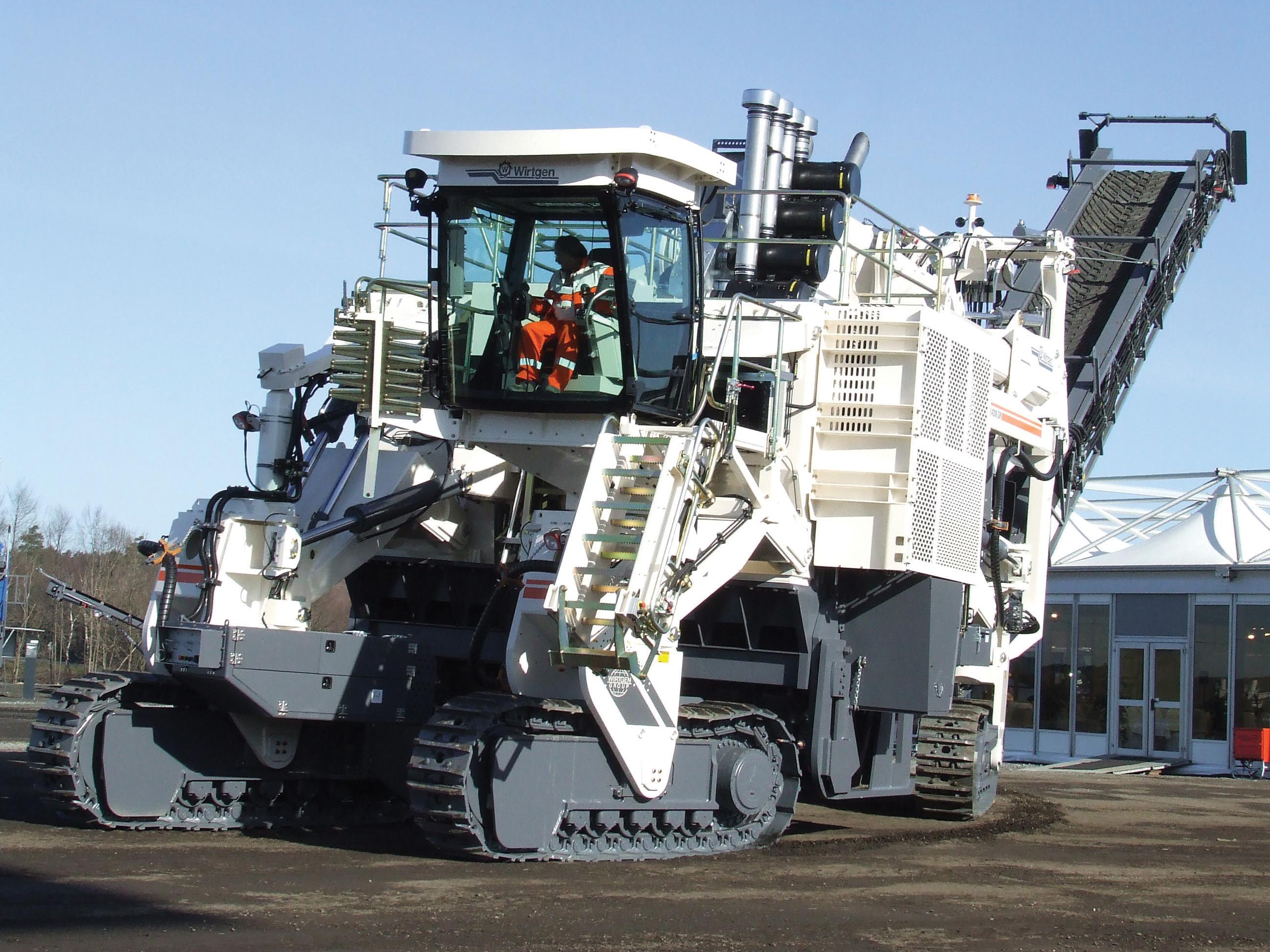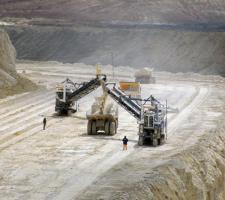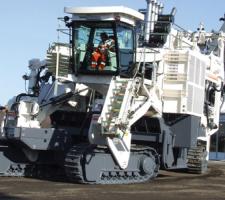
Acceptance of surface miners in quarrying applications is growing in some parts of the world and, according to Wirtgen, it could benefit some European quarry operations. At the launch of the company's flagship 4200SM model, product manager Bernhard Schimm said that for quarries with the right geological deposits and layout, surface miners can offer good productivity.
"Around 50% of the surface miners already in use operate in limestone quarrying applications and are ideal closer to residential areas where noise and vibration from blasting can be an issue," he said. "The difference between using the machine in mining compared with quarrying is that the rock is generally harder than ores and this can impact on production rates. However, in areas where drilling and blasting is prohibited, surface miners can offer an alternative approach for aggregate extraction." Wirtgen developed its surface miner range in the 1980s as a follow-on from its road milling technology and uses the same basic drum mounted milling tool concept. The machines were aimed at large open cast mines and are much larger than their road building counterparts.
The latest 4200SM is the largest model in the range and completes the latest generation of models which Wirtgen started to rollout in 2000. The 211tonne 4200SM has a 4200mm cutting width and can mine a depth of up to 650mm in hard rock and 830mm in softer rock in one pass at speeds of up to 20m per minute.
The drum is driven by fluid coupling with a reducer to match the engine revolutions with those of the drum. Schimm said that the tungsten carbide tool design on each machine is bespoke to the customer for the specific application but all machines have wear resistant strips between the tools to protect the drum from excessive wear. The tool holders are designed from special steel to cope with welding into the drum and the force of cutting and Wirtgen has also now developed a hand-held power tool to aid tool removal.
The machine has a 1800 slewable, height adjustable conveyor which can load 240tonne capacity dump trucks at a rate of 3000tonnes per hour. Schimm also said that it is working with one of its customers to develop a mobile conveyor that can operate along side the surface miner but he said that this is still at a very early stage.
The machine is mounted on four steerable crawlers with three driving options to deliver a turning circle of 12.5m.
Safety has been a high priority with the design. The machine is surrounded by walkways and stairs with handrails, access to the cab is via hydraulic fold down steps and all daily maintenance points have ground level access.
The first of the 4200SMs will be delivered to mine operator FMG in Australia, which operates 600m long strips to minimise the need to turn the machine. "The plan of the mine or quarry needs to take the operation of the surface miners into account and requires a different layout from a conventional drill and blast lay out," said Schimm.
While Wirtgen is not expecting the 4200SM to be a big seller into European quarries, the company has a range of smaller machines that are already used in some aggregate applications. According to Schimm,
"Four of our quarries are within protected areas and no blasting is allowed there, so surface miners allow us to meet the legislative requirements to continue operating," said Eurocement director of mining Viktor Guskov. "We took delivery of our first unit in 2005 and now have the machine working at a number of sites, including one hard limestone application. One key thing we learnt is that each quarry is different and not only is it essential to get the right tool for that site but also to define the right speed and cutting depth to get the required fragmentation."















